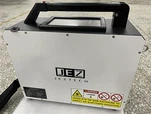Introduction: Laser cleaning machines are widely used for various industrial applications due to their high precision and efficiency in removing contaminants. However, it is essential to ensure the safety of personnel by maintaining a safe working distance. This article discusses the importance of maintaining a proper safety distance while operating a laser cleaning machine.
Importance of Safety Distance: The primary reason for maintaining a safe distance is to minimize the risk of accidental exposure to the laser beam. Laser beams used in cleaning machines are powerful and can cause severe eye and skin injuries if proper precautions are not taken. Therefore, determining and maintaining a safe distance is crucial to prevent any potential harm.
Factors Influencing Safety Distance: Several factors influence the determination of a safe working distance, including the laser power output, beam divergence, pulse duration, and the type of laser used. Higher laser power outputs and shorter pulse durations necessitate larger safety distances. Additionally, the beam divergence, which describes how the laser beam spreads out, also affects the safe working distance.
Calculation of Safety Distance: To calculate the appropriate safety distance, the laser's maximum permissible exposure (MPE) must be considered. The MPE is the maximum level of laser radiation to which a person can be exposed without suffering significant adverse effects. Using the MPE, along with the laser's power and beam characteristics, the safe working distance can be calculated using established guidelines or formulas provided by laser safety experts.
Implementing Safety Measures: Besides maintaining a safe working distance, it is essential to implement additional safety measures. For instance, operators should always wear appropriate laser safety goggles to protect their eyes from accidental exposure. The laser cleaning machine should also be equipped with interlocks that automatically stop the laser emission if the safety distance is breached. Regular training and awareness programs should be conducted to educate operators about the potential hazards associated with laser cleaning machines.
Conclusion: Ensuring a safe working distance is of utmost importance when operating a laser cleaning machine. It helps protect operators from potential harms caused by accidental exposure to the laser beam. By considering factors such as laser power, beam divergence, and using established guidelines, the proper safety distance can be determined. Furthermore, implementing additional safety measures, such as wearing protective goggles and incorporating interlocks, enhances the overall safety of laser cleaning machine operations.










